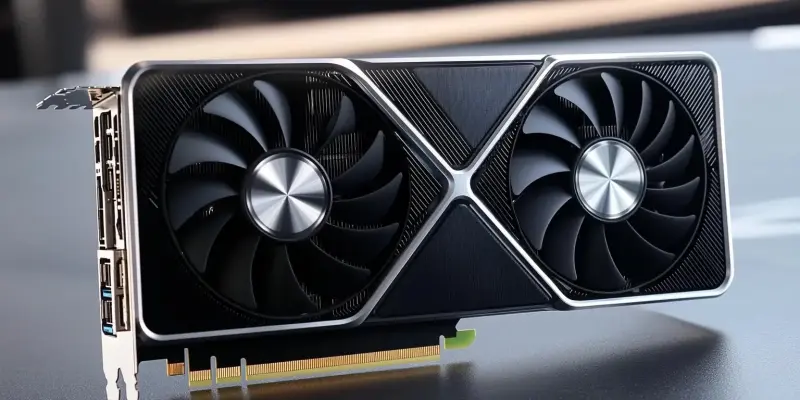In recent times, technology enthusiasts and professionals alike have been abuzz with reports of alarming issues plaguing NVIDIA’s highly anticipated GeForce RTX 5090 and RTX 5090D graphics cards. Users have been reporting an unsettling trend where their once-praised GPUs are rendered inoperable following the installation of the latest drivers. The RTX 5090D, specifically targeting the Chinese market with some reduced AI functionalities, shares these issues with the RTX 5090 model, leading to widespread concern across various tech forums and communities.
Rise of Bricking and System Unrecognition
Predominant Issues Affecting the RTX 5090 and 5090D
Since their launch on January 30th, the NVIDIA GeForce RTX 5090 and 5090D GPUs have faced a barrage of complaints from users, particularly in China, who experienced significant issues post-driver installation. These issues were prominently highlighted on forums like Chiphell, Baidu, and Bilibili, where numerous users reported that their GPUs became unrecognizable to their systems. This issue seems to affect cards from manufacturers including Colorful, Manli, and occasionally Gigabyte, signaling a wider problem within the series rather than isolated incidents.
Forums and Vendor Concerns
Third-party vendors and active members of forums like Goofish have expressed mounting concerns regarding a high probability of these problems spreading across all RTX 5090 and 5090D units. The bricking issue, where the GPU becomes entirely non-functional, has been particularly troubling, with users sharing cautionary tales and seeking advice on potential troubleshooting solutions. Additionally, some reports have surfaced indicating instances of IC burns and minor glitches, further complicating the situation as users struggle to find reliable fixes or long-term solutions.
Hardware Compatibility and Troubleshooting
Incompatibility with Motherboards
One of the primary suspicions behind these issues lies in the compatibility of the RTX 50 series with older motherboards. The RTX 5090 and 5090D are the first fully compliant Gen5 cards, and this drastic shift seems to have triggered signaling issues with outdated motherboards. Users have reported temporary fixes by downgrading the PCIe option from 5.0 to 4.0, which hints at better stability, although this method has not been widely confirmed as a definitive solution. The transition to Gen5 technology appears to be causing more problems than anticipated, affecting the overall functionality of these high-end GPUs.
Power Cable Complications
Adding to the array of problems are potential power cable issues, particularly during intense testing phases. The older 12VHPWR connectors that were used in predecessor models like the RTX 4090 have been known to face severe melting issues. This alarming trend poses a significant risk for the more power-demanding RTX 5090, although the newer 12V-2×6 connectors for the RTX 50 GPUs have not yet shown similar problems, primarily due to their currently low inventory. Despite this minor relief, users remain wary of such complications and the potential hazards they pose.
Conclusion: The Road Ahead
Cautious Optimism Among Users
In summary, the NVIDIA GeForce RTX 5090 and 5090D GPUs are grappling with significant issues following driver installations, rendering several units bricked and raising power cable compatibility concerns. The primary consensus among the tech community is one of cautious optimism, with users experimenting with various suggested solutions while holding out for more comprehensive fixes from NVIDIA. As these compatibility problems appear to stem from the transition to Gen5 technology and its interaction with older hardware, enthusiasts and professionals alike are keenly observing developments.
Awaiting NVIDIA’s Response
In recent times, technology enthusiasts and professionals have raised concerns about NVIDIA’s much-anticipated GeForce RTX 5090 and RTX 5090D graphics cards. These cards, initially highly praised, are reportedly facing significant issues that have left many users frustrated. Specifically, after installing the latest drivers, users found their GPUs becoming completely inoperable. These problems aren’t limited to one model; the RTX 5090D, designed with reduced AI functionalities for the Chinese market, also suffers from the same issues as the RTX 5090. This situation has sparked widespread alarm across various tech forums and communities. Users are voicing their worries and sharing their problematic experiences. NVIDIA’s failure to resolve these issues swiftly has led to disappointment among users who were excited about leveraging the advanced capabilities of these latest cards. The ongoing driver-related problems underscore the need for immediate fixes to retain customer trust and maintain NVIDIA’s industry reputation.

